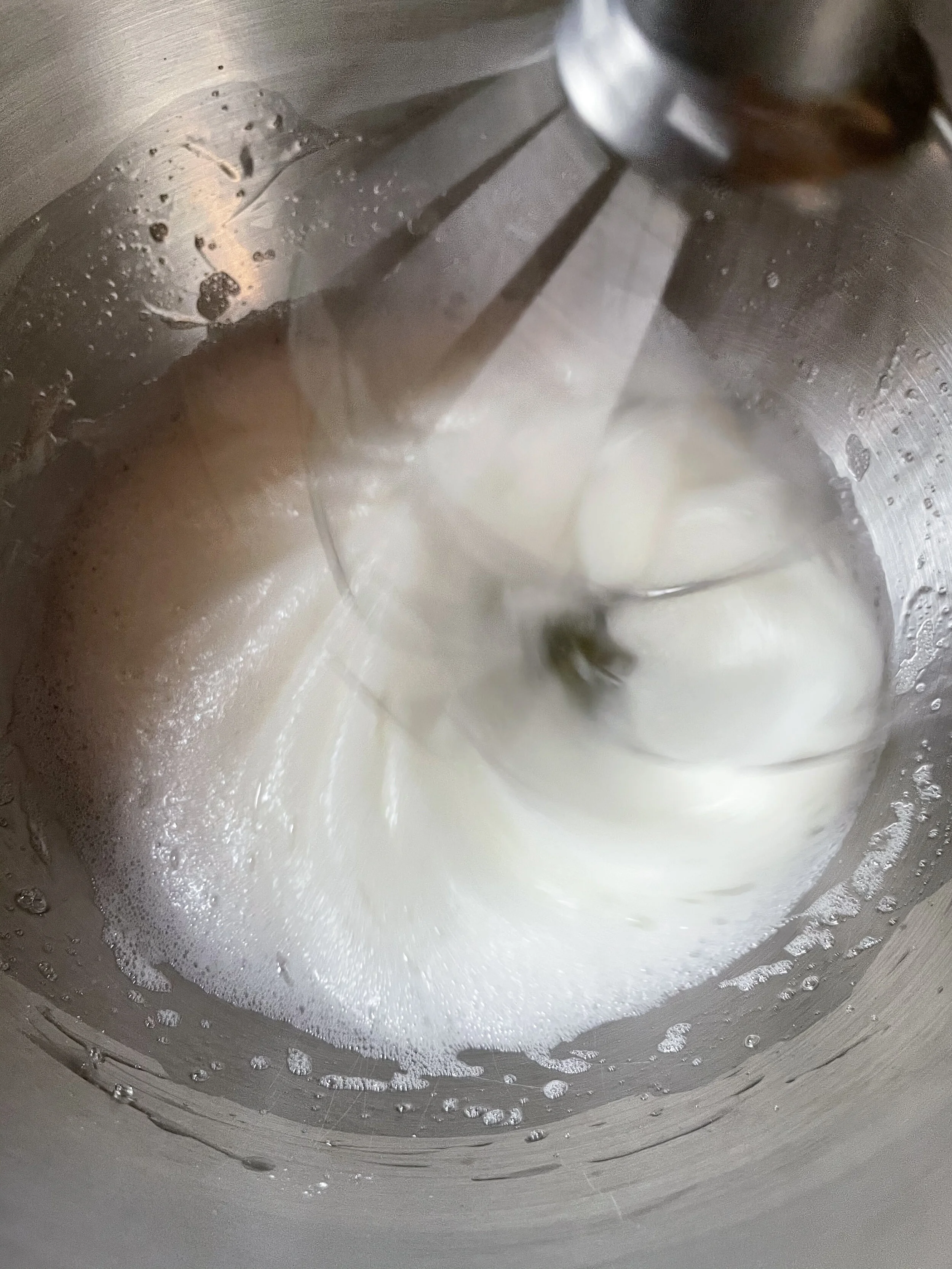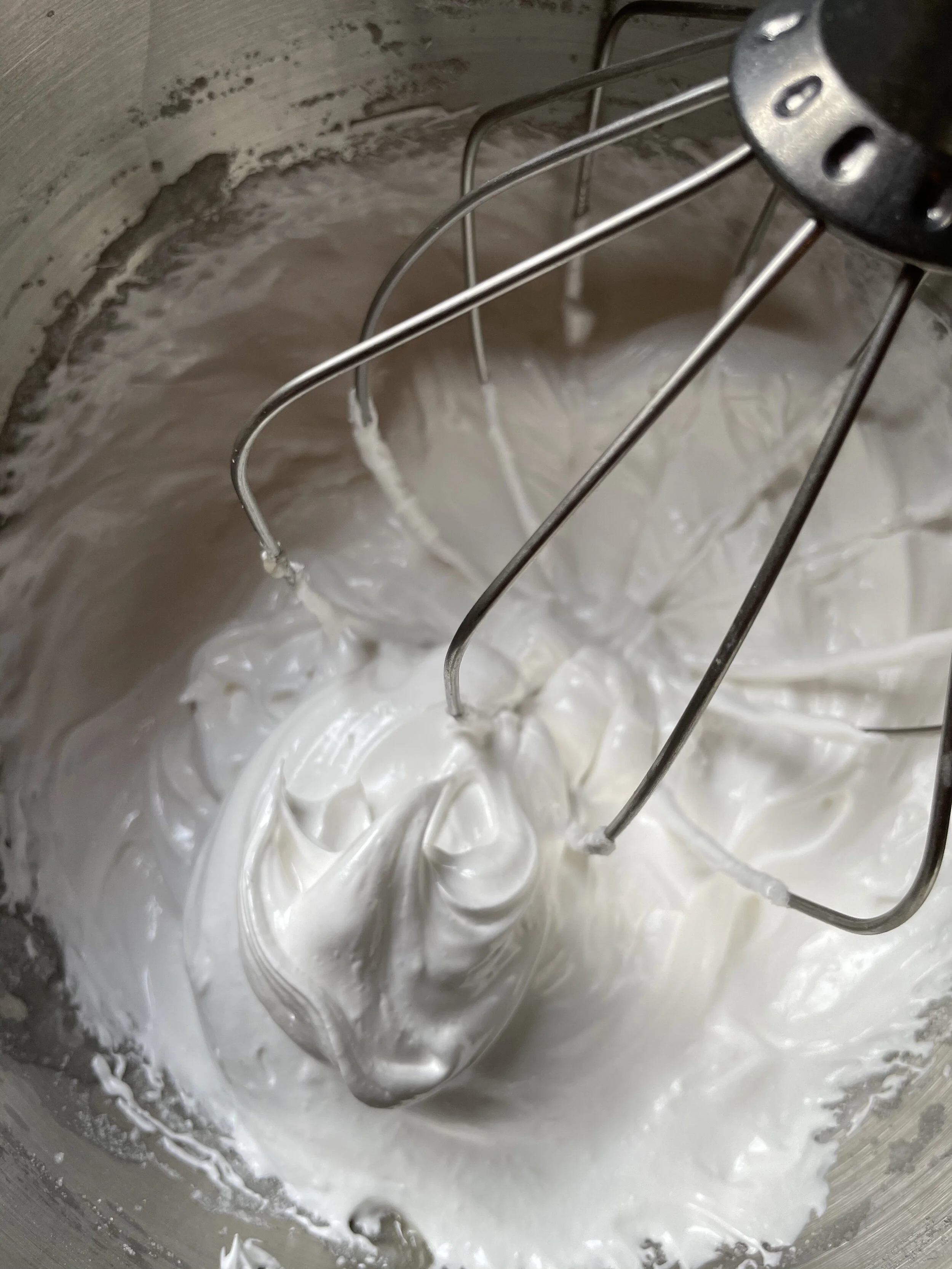Pavlova
Pavlova
A pavlova is a dessert of infinite possibilities. Meringue, creme patisserie, whipped cream, coulis, and fresh fruit. Arrange how ever you like. Or stick to the basics, at its simplest but by no means any less extraordinary, a cream cake layered with freshly whipped cream and fruit.
A pavlova is also what I like to call a dessert of components. It is one recipe made up of a few different component “master” recipes, that are arranged to create a more complex item. In this case the master recipes are French meringue, creme patisserie (pastry cream) and coulis (puréed sauce of fruit, strained).
Although I’m calling them master recipes, do not be put off by that term, everyone can make them. And if you enjoy baking, they are good recipes to memorize if at all possible, so whenever you have a few extra egg whites, or a few extra egg yolks, you can whip up a batch for a lovely dessert. In general, French meringue is one egg white to 1/4 cup of sugar. Easy to remember.
All of these components except for the whipped cream and fresh fruit can be made ahead of time. The pastry cream will keep up to four days, well sealed in the refrigerator. The coulis for up to two weeks in the refrigerator. And the meringue will keep up to a week, well sealed at room temperature (sometimes longer depending on the humidity of your house or locality).
To be honest meringue can be tricky. Here are some tricks to achieving a lofty, billowy meringue each and every time.
Make sure that any bowl, utensil, or your hands that come into contact with the egg whites are very clean and free of oil or fat. This will deflate the meringue. Yolk will deflate the meringue, so if a little gets in, don’t use it. Make scrambled eggs.
Let the egg whites set out at room temperature for 30 minutes to 1 hour before using so they warm. They will aerate much better warm than cold.
If your kitchen runs cold (like mine), feel the side of the bowl, if still chilly set a bowl of hot water underneath the mixer bowl as you are whisking the egg whites. Do this until the side of the mixer bowl feels room temperature.
Add the sugar slowly, so you don’t deflate the meringue.
Whip the egg whites on medium-high speed, not high speed. On my kitchen aid mixer that’s about speed 8. It’s tempting to blast the speed to get it done faster, but the smaller air bubbles created at a slower speed create better structure in the meringue than larger air bubbles on high speed.
Separating Egg Whites: A special note here. If you like separating by pouring the egg between two halves of the shell, by all means continue. When I learned pastry I was taught a different technique.
Crack the egg shell, then very gently ladle the egg into the bottom of a clean bowl so they entire yolk stays in tact.
Continue with the rest of the eggs.
Wash your hands.
Gently lift the yolks out, one by one, using your fingers to “sieve” the yolk away from the white.
Place the yolk in a separate bowl.
Pour the whites into a mixer bowl (I do this in a different bowl incase I break a yolk so I don’t have to wash out the mixer bowl). This takes some practice and I recommend starting one egg at a time until you get good at it.
Special equipment:
Parchment paper or a silicone mat is a must. An ungreased cookie sheet will work in a pinch, but you risk breaking the meringue as you lift it off the pan.
Pavlova
Yield: 8-12 servings
Time: 40 minutes active, 2 hours waiting
Ingredients:
For the Meringue:
4 large egg whites, room temperature
1 cup/200 grams granulated sugar
pinch cream of tartar (or a dash of lemon juice)
For the Raspberry Coulis:
1 pint (about 2 cups) raspberries, fresh or frozen
1/2 cup/100 grams granulated sugar
For the Whipped Cream:
1 cup heavy whipping cream
1/4 cup/25 grams confectioner’s sugar (or more to taste if you like)
1 pint fresh strawberries, hulled and sliced
1 pint fresh raspberries
Directions:
Make the meringue:
Set the egg whites out to warm about 30 minutes to 1 hour before you start, no longer than 1 hour.
Preheat the oven to 200 degrees F. Line two to three sheet pans with parchment paper.
Measure the sugar into a small bowl and have a kitchen spoon ready.
Pour the egg whites into the bowl of a stand mixer and attach the whisk. Whip the egg whites on medium high speed. As mentioned above, if the egg whites are still chilly, place a shallow bowl of hot water underneath until they warm.
Add the pinch of cream of tartar. When the egg whites are very foamy and begin to hold the lines of the whisk (below), begin to add the sugar one spoonful at a time, slowly sprinkling it in near the side of the bowl (so the whisk does not throw it out).
Foaming egg whites
Continue to sprinkle the sugar and whisk at medium high speed until all the sugar is gone. Whip until a firm peak is made, when you stop the mixer and remove the whip, the meringue will hold its form.
Meringue, firm peak
For this recipe I’ve opted to make the individual meringues shaped like little clouds with a divot in the center (like making a gravy well in mashed potatoes). But you can also pipe the meringue into little nests or discs. After making my clouds I will pipe little meringue kisses of all sizes to decorate the plate with. They will all bake at the same speed so you can put them on the same sheet pan, just not too close together.
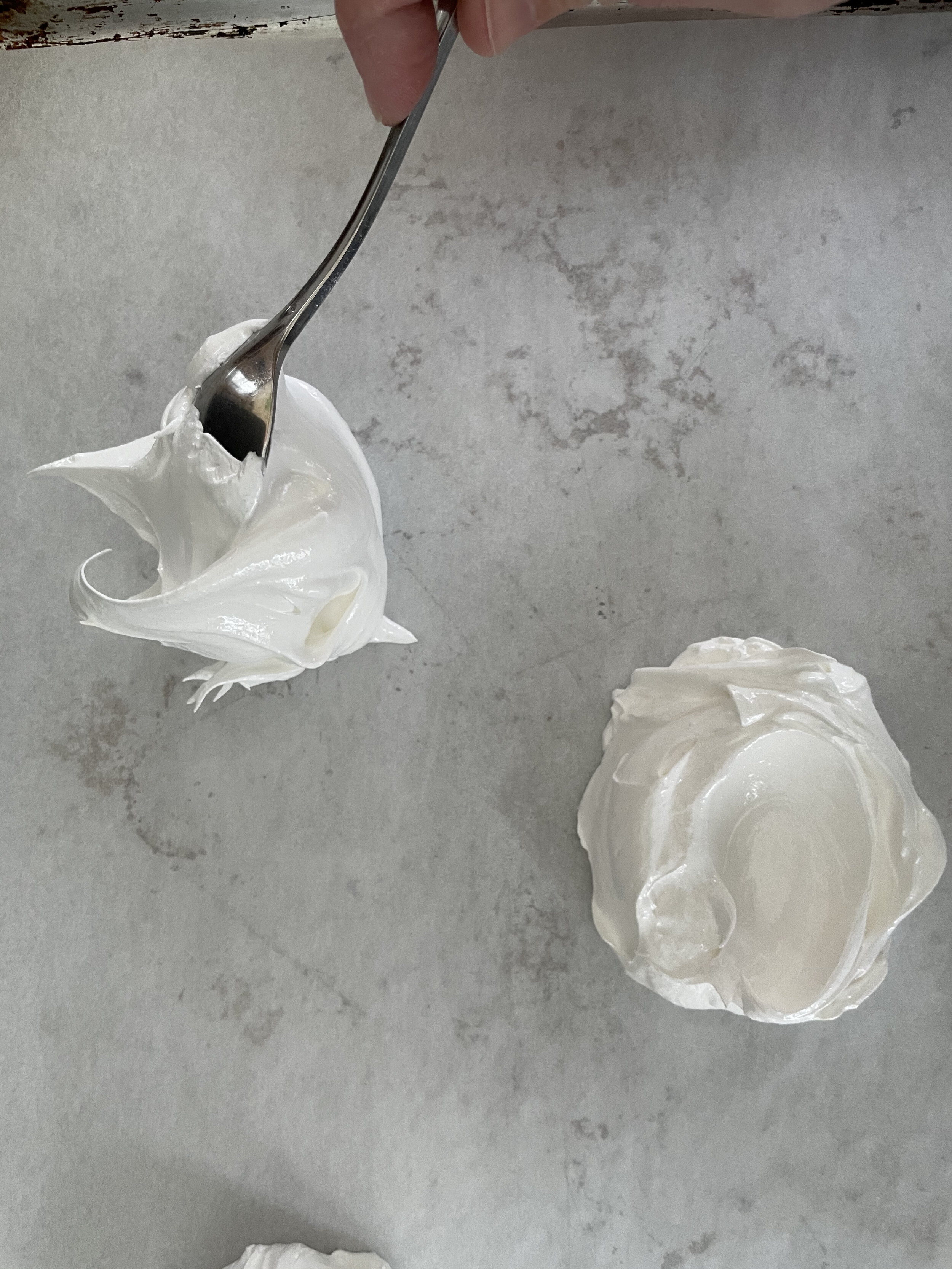
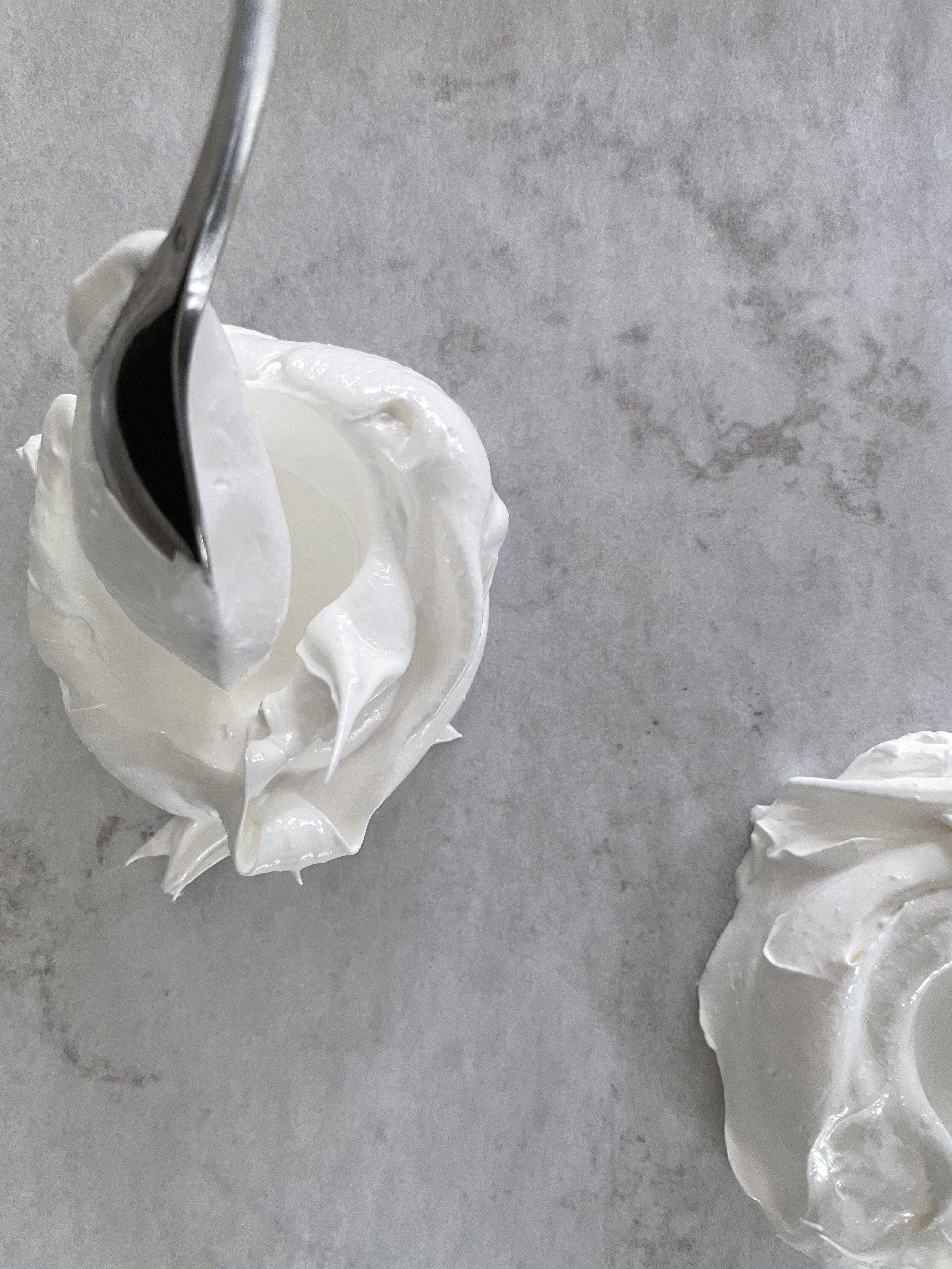
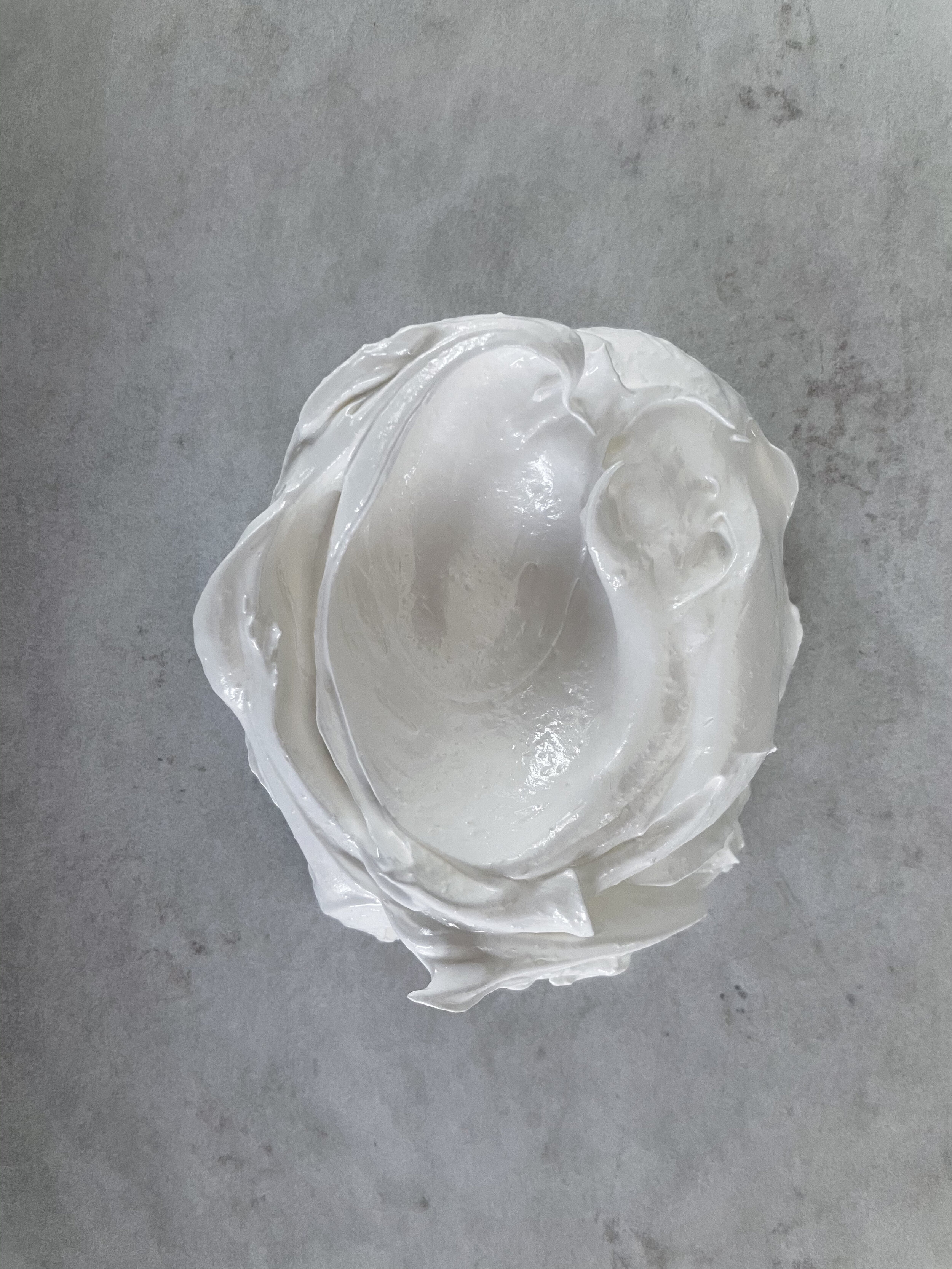
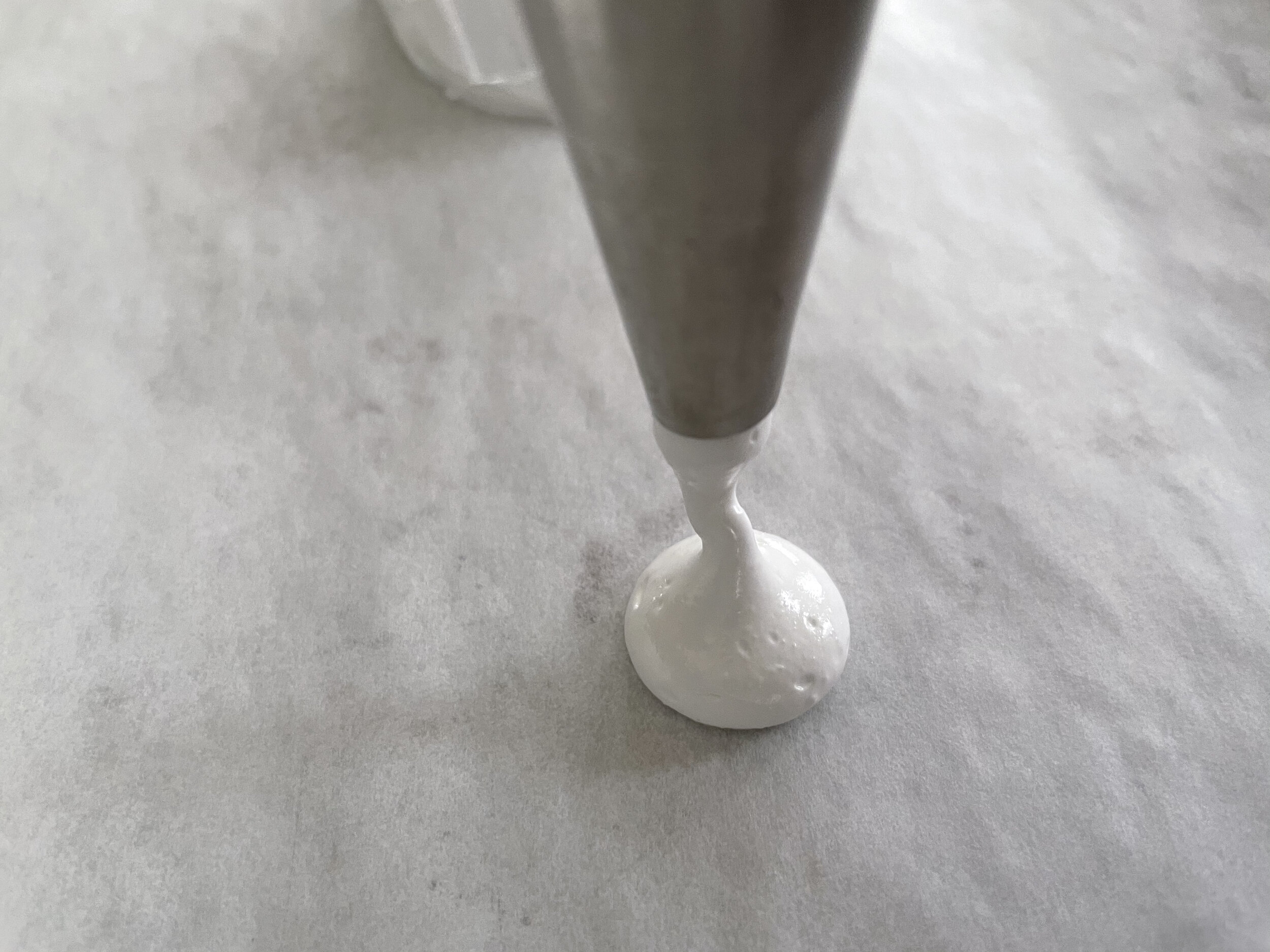

Bake the meringues for 1 1/2-2 hours. I was taught a proper French meringue is light white and crisp all the way through. But I’ve found I also like it sometimes a little soft and marshmallowy in the center. So you can decide which you like. For chewy meringue bake until the clouds lift off the parchment and do not indent when pressed, a full 2 hours or longer depending on your oven. For chewy, check after an hour, they will indent on the side when pressed.
Let the meringues cool completely. If not using right away, store very well sealed in a ziplock bag or container for up to one week at room temperature. (Humidity will soften meringue, keep that in mind)
You can make the pastry cream days ahead of time, or while the meringue is baking, but it does need time to set up in the refrigerator (if you want to use it).
The recipe is here: Pastry Cream.
Make the Coulis:
Place the fresh or frozen raspberries in a heavy bottom saucepan. Add the sugar and stir. Cook over medium heat until the berries begin to release juice. Bring to a simmer and remove from heat. Let cool about 5 minutes. For a proper coulis use a fine mesh strainer to strain out the seeds, use a ladle or spatula to push down on the fruit as you strain the sauce into a bowl. Sometimes I like to do this with half and then leave the other half “au natural” for different textures. Up to you.
Assemble the Pavlova:
When you are ready to assemble the dessert, wash and cut the berries and whip the cream.
Place your mixing bowl and whip in the freezer for a few minutes. Then pour the cream into the chilled bowl and add the sugar. Whip to a soft peak, the cream will hold the lines of the whisk but fold softly over itself when you scoop it. (this is also called Chantilly cream)
If you are using pastry cream, scoop about 1/4 cup of whipped cream into the bowl of the pastry cream and fold it in. This lightens the pastry cream and makes it a little less like Jell-o.
To assemble the Pavlovas:
Organize your components and line up the plates assembly line style. Place the meringue cloud on the plates. Spoon in a little bit of the coulis in the divot. Then a spoonful of pastry cream (or more if you’re like me). Then the berries. Then a little more coulis and finally the whipped cream on top. Decorate with meringue kisses if you made them, the raspberry coulis and more berries.
Scroll down for more inspiration.
Pavlova
Pavlova
Pavlova

